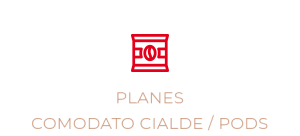Although any company can use both methods for different reasons, public companies are required to use absorption costing due to their GAAP accounting obligations. Assume each unit is sold for $33 each, so sales are $330,000 for the year. If the entire finished goods inventory is sold, the income is the same for both the absorption and variable cost methods. The difference is that the absorption cost method includes fixed overhead as part of the cost of goods sold, while the variable cost method includes it as an administrative cost, as shown in Figure 6.12.
- Additionally, fixed overhead is $15,000 per year, and fixed sales and administrative expenses are $21,000 per year.
- This suggests that in addition to the direct costs of creating each unit, the price of a product also includes a fraction of the indirect costs spent during the production process.
- This can make it somewhat more difficult to determine the ideal pricing for a product.
- In the case of absorption costing, the cost of a cost unit comprises direct costs plus production overheads, both fixed and variable.
In January, Higgins only produced 45,000 widgets, so it allocated just $90,000. The actual amount of manufacturing overhead that the company incurred in that month was $98,000. Absorption costing is also often used for internal decision-making purposes, such as determining the selling price of a product or deciding whether to continue producing a particular product. In these cases, the company may use absorption costing to understand the full cost of producing the product and to determine whether the product is generating sufficient profits to justify its continued production. Under generally accepted accounting principles (GAAP), U.S. companies may use absorption costing for external reporting, however variable costing is disallowed.
Kevin is currently the Head of Execution and a Vice President at Ion Pacific, a merchant bank and asset manager based Hong Kong that invests in the technology sector globally. Prior to joining Ion Pacific, Kevin was a Vice President at Accordion Partners, a consulting firm that works with management teams at portfolio companies of leading private equity firms. These materials were downloaded from PwC’s Viewpoint (viewpoint.pwc.com) under license.
From this amount, fixed overheads are deducted to get the amount of profit or loss. In the case of absorption costing, costs or expenses are classified on the basis of functions, such as production costs, administration, selling and distribution costs. In the case of marginal costing, however, costs are classified on the basis of nature or variability, i.e., fixed and variable costs. Absorption vs. variable costing will only be a factor for companies that expense costs of goods sold (COGS) on their income statement.
Difference in the size or magnitude of opening and closing stocks not only affects the unit cost of production but profit also in the case of absorption costing due to the impact of fixed cost. In the case of marginal costing, however, there is no such problem with regard to the size of opening and closing stocks. Under the marginal costing technique, inventories are valued at marginal cost. Absorption costing is favoured by the Accounting Standards Committee of the United Kingdom, for external reporting. The reason variable costing isn’t allowed for external reporting is because it doesn’t follow the GAAP matching principle.
As against the variable costing, some people may argue for the absorption costing which considers all costs to be inventoried. The reason why closing stock will be more than the opening stock is that the fixed cost brought forward as a part of opening stock will be much lower than the fixed cost carried forward as a part of closing stock. (h) Under this technique, profit is the excess of sales revenue over cost of goods sold.
Disadvantages of Absorption Costing
That way, in absorption costing, fixed production overheads are split in two – attributable to COGS (cost of goods sold) and attributable to inventory (finished goods ending balance). Thus, absorption costing allocates a portion of fixed manufacturing overhead cost to each unit of product, along with the variable manufacturing costs. All fixed manufacturing overhead expenses are recorded as an expenditure on the income statement when they are incurred since variable costing recognizes them as period costs. Additionally, it is not helpful for analysis designed to improve operational and financial efficiency or for comparing product lines. The absorption cost per unit is $7 ($5 labor and materials + $2 fixed overhead costs). As 8,000 widgets were sold, the total cost of goods sold is $56,000 ($7 total cost per unit × 8,000 widgets sold).
In contrast to the variable costing method, every expense is allocated to manufactured products, whether or not they are sold by the end of the period. virginia income tax rate 2021 depends on levels of output which vary from period to period. Fixed overhead rate must be based on normal capacity; otherwise such vitiated costs will not be helpful for purposes of control and comparison. However, for net profit to be same in a situation such as this, it is necessary that unit cost of current production, opening stock and closing stock should be the same for both variable and fixed elements. The formats in respect of absorption costing and marginal costing being different, the operating statements under these two techniques also differ.
As opposed to the other alternative costing method called variable costing, every expense is allocated to products manufactured within or not they are sold. Under the absorption costing method, all costs of production, whether fixed or variable, are considered product costs. This means that absorption costing allocates a portion of fixed manufacturing overhead to each product.
Absorption costing and variable costing are two different methods of costing that are used to calculate the cost of a product or service. While both methods are used to calculate the cost of a product, they differ in the types of costs that are included and the purposes for which they are used. The differences between absorption costing and variable costing lie in how fixed overhead costs are treated.
Accounting for All Production Costs
Companies must choose between https://intuit-payroll.org/ or variable costing in their accounting systems, and there are advantages and disadvantages to either choice. Absorption costing, or full absorption costing, captures all of the manufacturing or production costs, such as direct materials, direct labor, rent, and insurance. Absorbed cost, also known as absorption cost, is a managerial accounting method that includes both the variable and fixed overhead costs of producing a particular product.
What Are the Disadvantages of Variable Costing?
For example, if a fixed cost of $1,000 is allocated to 500 units, the cost is $2 per unit. While this was not the only reason for manufacturing too many cars, it kept the period costs hidden among the manufacturing costs. Using variable costing would have kept the costs separate and led to different decisions. It is also possible that an entity could generate extra profits simply by manufacturing more products that it does not sell.
Overhead is usually applied based on a predetermined overhead allocation rate. Absorption costing is dependent on level of output; so different unit costs are obtained for different levels of output. An increase in the volume of output normally results in reduced unit cost and a reduction in output results in an increased cost per unit due to the existence of fixed expenses. The apportionment and allocation of fixed manufacturing overheads to cost centres make executives more conscious about costs and services rendered. As such, in case a concern produces more than it sells, i.e., when production exceeds sales, the whole of the fixed production cost relating to the current period will not be matched against revenue. A part of it will be held in the form of inventory, and will be released as part of the cost of goods sold in a later year.
The ending inventory will include $14,000 worth of widgets ($7 total cost per unit × 2,000 widgets still in ending inventory). In addition, the use of absorption costing generates a situation in which simply manufacturing more items that go unsold by the end of the period will increase net income. Because fixed costs are spread across all units manufactured, the unit fixed cost will decrease as more items are produced. Therefore, as production increases, net income naturally rises, because the fixed-cost portion of the cost of goods sold will decrease. The inclusion of fixed costs and their arbitrary apportionment over the cost units gives rise to the problem of under or over absorption of overheads.
Direct materials are materials that are included in a finished product. It has been recognised by various bodies as FASB (USA), ASG (UK), ASB (India) for the purpose of preparing external reports and for valuation of inventory. It helps to conform with accrual and matching concepts which require matching cost with revenue for a particular period. It is to be kept in view that only one rate is computed for any single group of overheads. (d) To analyse the data related to production and to confirm that the resources are properly used or not. Manufacturing costs, other than material cost, labour and chargeable expenses, do not reflect the same characteristic feature, but differ widely from one another.




